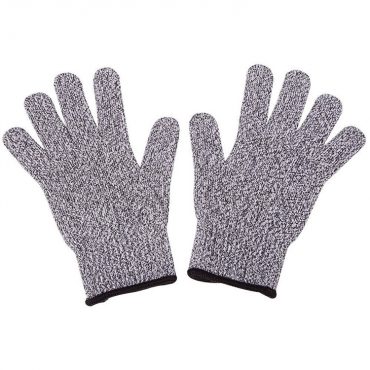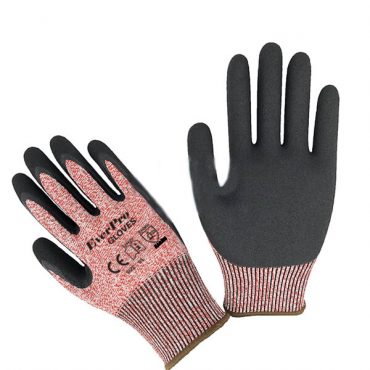1. Acid and alkali resistant gloves
It is a protective product to prevent dangerous hands from acid and alkali, and its quality should meet the requirements of “Acid (Alkali) Resistant Gloves”. Gloves are not allowed to have defects such as blooming, brittleness, stickiness and damage. The non-leakage of gloves means that it must be airtight, and no leakage is allowed under a certain pressure.
This kind of gloves can be divided into rubber acid and alkali resistant gloves, latex acid and alkali resistant gloves, plastic acid and alkali resistant gloves, and dipped acid and alkali resistant gloves.
The anti-crew cover and anti-virus gloves can be replaced by acid and alkali resistant gloves.
2. Anti-vibration gloves
Personal protective equipment used to prevent vibration-induced occupational disease “white finger syndrome” when using hand-held vibrating objects (such as chain saws, rock drills, etc.) in forestry, mining, construction, transportation and other departments for combat vibration. In terms of the structure of anti-vibration gloves, the main thing is to add a certain thickness of foam, latex, and atmosphere interlayer on the palm surface to receive vibration. The thicker the liner, the more atmosphere it contains, and the better the vibration damping. But when the palms and fingers are too thick, it will affect the exercise easily.
3. Oil resistant gloves
These products are made of materials such as nitrile butadiene rubber, chloroprene, polyurethane, etc., to protect the hand skin and stop being stimulated by oils and substances to cause various skin diseases, such as acute dermatitis, acne, folliculitis, monotonous skin, Chapped, calm pigmentation and nail changes.
4. Fire-resistant and flame-retardant gloves
Traditional fire-resistant and flame-retardant gloves are made of asbestos, and are divided into two-finger and five-finger styles. There are three sizes: large, medium and small. Because asbestos fiber is irritating to human skin, it has been rarely used. Generally, fire-resistant canvas or other fire-resistant flame-retardant fabrics are used to make fire-resistant and flame-retardant gloves, which are suitable for smelting furnace front workers or other furnace work types.
5. Insulating gloves for live working
Refers to a kind of insulating gloves that workers wear when carrying out live work when replacing electrical configurations with voltages of 10 kV and below (or DC electrical configurations with corresponding voltage levels). The product model, model size and technical requirements must meet the requirements of “General Prerequisites for Insulating Gloves for Live Working”.
Gloves must have brilliant characteristics of power cut-off. At the same time, it also needs good tensile strength and elongation at break, as well as puncture resistance, aging resistance, flame resistance and low temperature resistance.
6. Welder’s gloves
Personal protective equipment to prevent high temperature, molten metal, sparks burning hands during welding. It is made from cow, pig tamarin or two-layer leather, and is divided into two-finger, three-finger and five-finger type according to different finger types. Welder’s gloves have strict requirements for being particularly unsightly and unsightly. The first-class product requires the leather body to be well-proportioned, full, tender and elastic, with detailed, well-proportioned, firm, uniform color depth and no lightness. Second-class product: The leather body is not full and elastic, the leather surface is thick and the color is slightly shaded.
7. Anti-static gloves
Composition of fabric containing conductive fibers. The other is woven gloves made of long-fiber elastic acrylic fibers, and then affixed to the palm part of the polyurethane resin, or on the fingertips part of the polyurethane resin or the surface of the glove is coated with polyethylene.
Gloves with conductive fibers quickly dissipate the static electricity collected on the hands. If the gloves with polyurethane or polyethylene coating are not easy to breed dust and static electricity. These products are mainly used in the assembly of low-current, rigorous instruments, product tribulations, electronic industry, printing, and various research structures.
8. Dust-free gloves
Processed from natural rubber, it can be injected into the human fingertips during the consumption process. Can consume
During the process, the static electricity permeated into the human body will destroy the product. The product is not contaminated and affected by residues, oil stains, dust and sweat on the fingers during the consumption process, and effectively protects the product. Most clean rooms use polyvinyl chloride (PVC) gloves.























